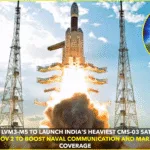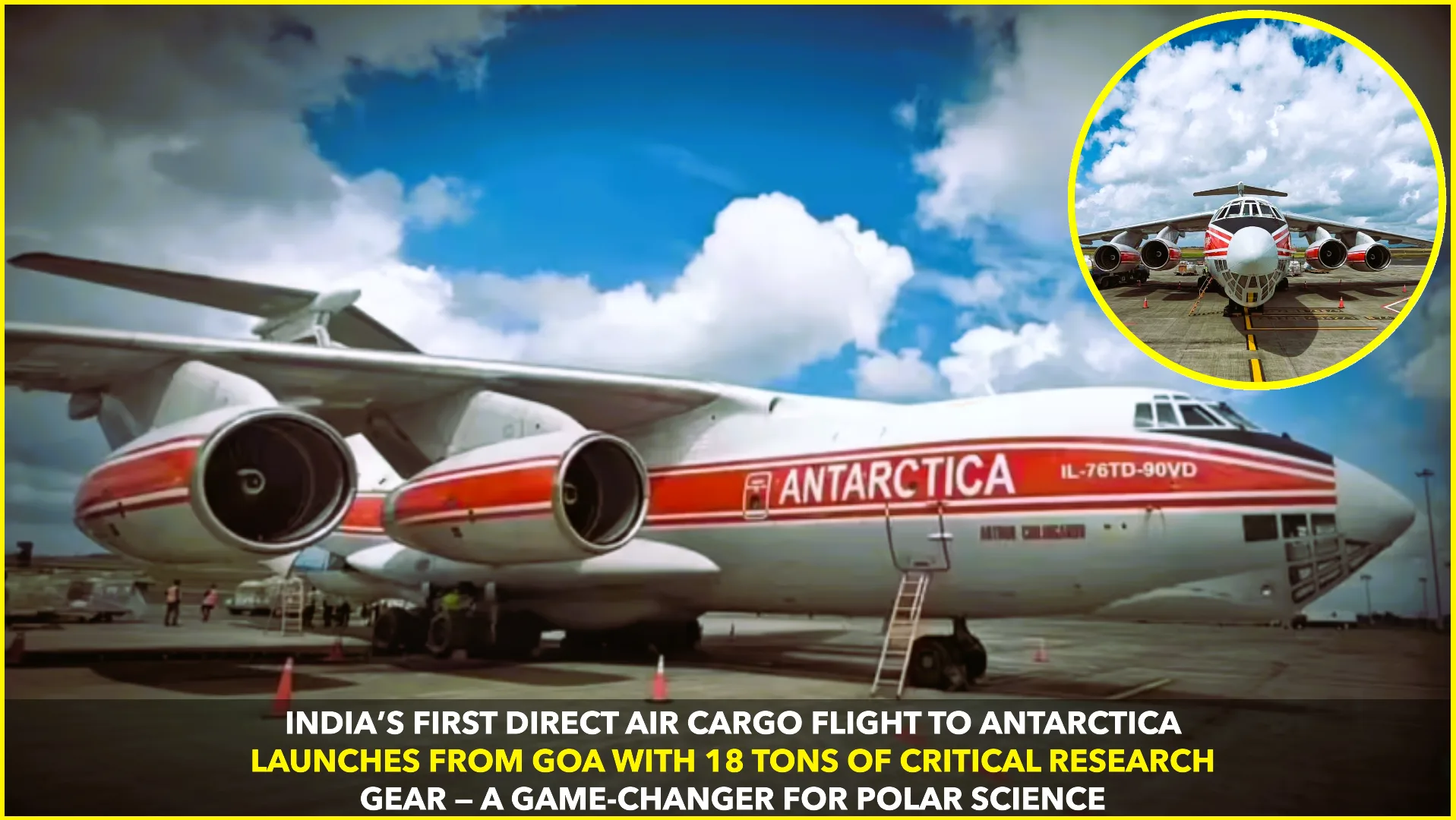In a groundbreaking moment for India’s scientific community, the nation has launched its first-ever direct air cargo flight to Antarctica, marking a new chapter in its polar exploration journey. The aircraft departed from Manohar International Airport (Mopa), Goa, carrying 18 tons of vital research and survival equipment destined for India’s Antarctic research stations — Bharati and Maitri (Indian Express, 2025).
The mission, organized by the National Centre for Polar and Ocean Research (NCPOR) under the Ministry of Earth Sciences, represents India’s growing logistical independence and scientific ambition in one of the planet’s most challenging environments (Deccan Herald, 2025).
A Historic Leap for India’s Polar Research
Until now, most of India’s cargo bound for Antarctica had traveled by sea — a route that can take six to eight weeks, depending on weather and ice conditions. Sea routes, though cost-effective, often caused delays that disrupted ongoing research projects. By shifting to air transport, India gains the ability to deliver time-sensitive scientific materials and emergency supplies far more efficiently (Indian Express, 2025).
The cargo, totaling 18 tons, includes sophisticated laboratory instruments, food, medical supplies, and spare parts for research facilities. It will support Indian scientists stationed in Antarctica as they continue studies on climate change, atmospheric science, glaciology, and oceanography (Hindustan Times, 2025).
The Journey and the Aircraft
The flight utilized a Russian-built Ilyushin IL-76, known for its ability to operate in extreme conditions and land on blue-ice runways — thick sheets of compacted ice used as makeshift airstrips. The plane’s route took it from Goa to Cape Town, South Africa, before proceeding to Troll Airfield in Queen Maud Land, a hub used by multiple nations participating in the Dronning Maud Land Air Network (DROMLAN) (Aerospace Global News, 2025).
According to Dr. Thamban Meloth, Director of NCPOR, “This air cargo mission marks a major stride in India’s logistics capability and demonstrates our growing leadership in Antarctic science.” He added that future missions may include more frequent aerial deliveries for urgent scientific or medical requirements (Deccan Herald, 2025).
Reducing Dependence on Sea Routes
Historically, India’s Antarctic expeditions relied heavily on sea vessels like the MV Vasiliy Golovnin, which transported researchers and cargo once a year. However, unpredictable weather and port delays often slowed deliveries. The introduction of direct air logistics eliminates these uncertainties and ensures year-round access to research stations (Indian Express, 2025).
Experts believe this development will strengthen India’s standing within the Antarctic Treaty System, a coalition of nations dedicated to preserving the continent for peaceful and scientific purposes. Faster resupply missions will allow India to expand its research programs and respond rapidly to environmental or technical challenges (Times of India, 2025).
Supporting India’s Antarctic Stations
India currently operates two permanent research stations in Antarctica:
- Maitri, established in 1989, focuses on geology, atmospheric sciences, and human physiology.
- Bharati, inaugurated in 2012, serves as a modern research base for multi-disciplinary studies, including coastal ecosystems and plate tectonics (Wikipedia, 2025).
Both stations are vital to understanding the link between the Southern Ocean and India’s monsoon systems, as well as long-term climate behavior (Hindustan Times, 2025).
Looking Ahead
While the air cargo route is expensive and logistically demanding, it provides flexibility that sea transport lacks. The mission’s success also highlights India’s growing ability to collaborate internationally, as the DROMLAN network includes logistics cooperation between Norway, Germany, and South Africa (Aerospace Global News, 2025).
Officials say such flights may not be frequent but will be launched when necessary — especially for high-priority scientific gear, emergency evacuation, or critical supplies during the Antarctic winter (Deccan Herald, 2025).
India’s first direct air cargo mission to Antarctica is not just about logistics; it’s about leadership. It showcases the nation’s technological strength, scientific curiosity, and resilience in pushing the frontiers of human exploration.
This historic flight reinforces India’s long-term commitment to polar research and strengthens its role among the few countries capable of conducting aerial logistics in Antarctica — a true milestone in India’s scientific journey.










